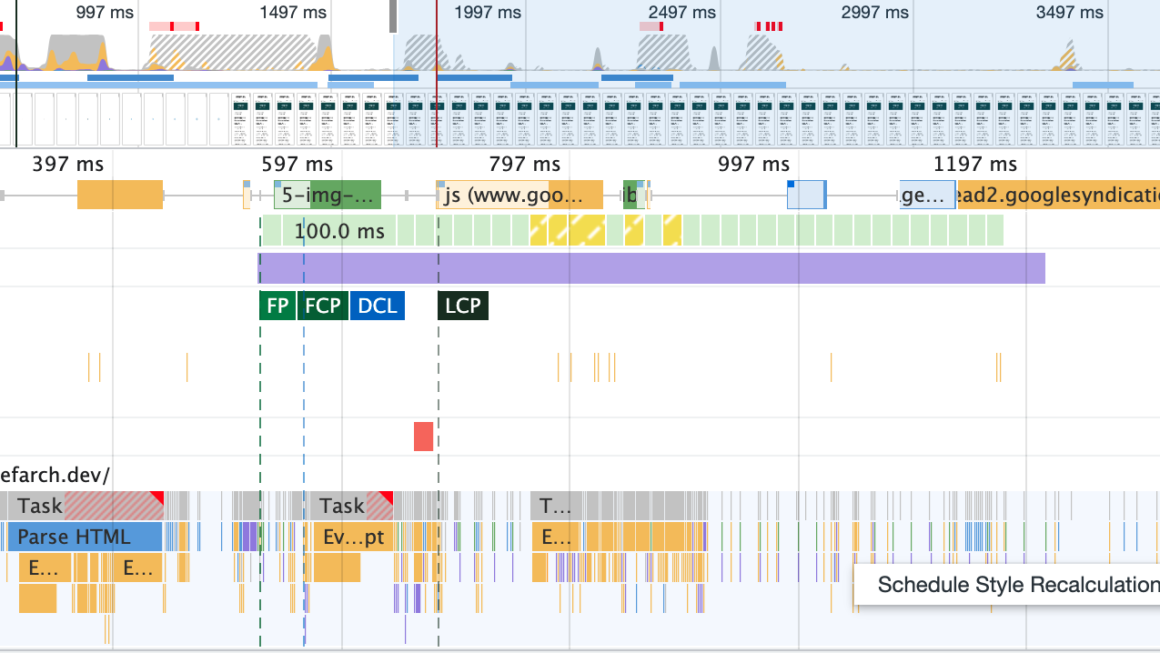Lets learn about Critical rendering path and optimizing the rendering using metrics such as FCP, TTI, Speed Index, TBT, and TTFB.
The Critical Rendering Path (CRP) is a series of steps that the browser takes to render a web page, from requesting the HTML code to displaying the final visual content. The performance of the CRP is crucial to the user experience, and optimizing it can significantly improve the perceived speed and responsiveness of your website. In this blog post, we’ll dive into the CRP and the key metrics for performance optimization.
Understanding the Critical Rendering Path
The CRP consists of several stages, each of which can impact the performance of your web page. The main stages are:
- Document Object Model (DOM) construction: This is the process of parsing the HTML code and creating a tree-like structure that represents the content of the page.
- Cascading Style Sheets (CSS) construction: This is the process of parsing the CSS code and determining the styles that will be applied to each element on the page.
- Render Tree construction: This is the process of combining the DOM and CSS information to create a tree-like structure that represents the visual layout of the page.
- Layout: This is the process of determining the size and position of each element on the page.
- Paint: This is the process of filling in the content and applying the visual styles to each element on the page.
Optimizing the Critical Rendering Path
To optimize the CRP, you need to focus on reducing the time it takes to complete each stage. Here are some key metrics to consider when optimizing the CRP:
- First Contentful Paint (FCP): This is the time it takes for the browser to render the first piece of content on the page, such as text or an image. A fast FCP can improve the perceived speed of your website and reduce bounce rates.
- Time to Interactive (TTI): This is the time it takes for the page to become fully interactive, meaning that users can click on links, fill out forms, and interact with other elements. A fast TTI can improve engagement and reduce frustration.
- Speed Index: This is a metric that measures the visual completeness of the page as it loads. A lower speed index indicates that the page appears to load faster, even if it’s not fully loaded.
- Total Blocking Time (TBT): This is the total amount of time that the page is blocked by long-running JavaScript or CSS that delays the rendering process. A low TBT can improve the responsiveness of your website and reduce frustration.
- Time to First Byte (TTFB): This is the time it takes for the browser to receive the first byte of the server response. A fast TTFB can improve the perceived speed of your website and reduce bounce rates.
Optimizing the Critical Rendering Path is essential for improving the performance of your website and providing a better user experience. By focusing on key metrics such as FCP, TTI, Speed Index, TBT, and TTFB, you can identify bottlenecks and take steps to optimize each stage of the CRP. Implementing best practices such as minimizing file size, reducing blocking JavaScript and CSS, and using caching can help you achieve faster load times and better performance.
If you are interested to learn more about CRP and optimization techniques use these online resources.
- Google Developers: https://developers.google.com/web/fundamentals/performance/critical-rendering-path
- Web.dev: https://web.dev/critical-rendering-path/
- Udacity: https://www.udacity.com/course/website-performance-optimization–ud884
- Mozilla Developer Network: https://developer.mozilla.org/en-US/docs/Web/Performance/Critical_rendering_path
- Performance.now(): https://www.youtube.com/channel/UC6P24bhhCmMPOcujA9PKPTA


